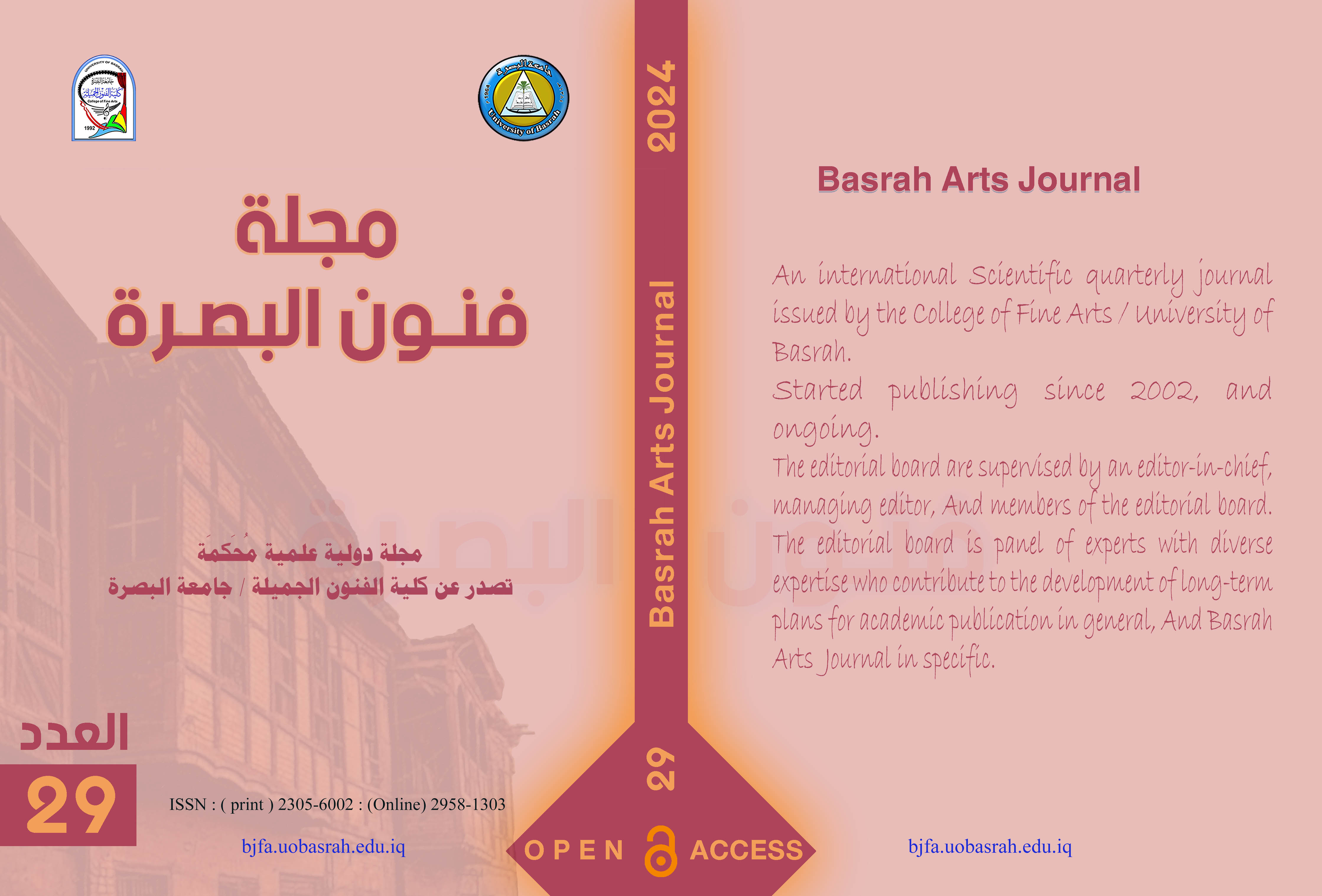Cultural symbols in wall paintings between Iraq and Italy
comparative study
DOI:
https://doi.org/10.59767/2024.05/29.2Keywords:
Symbols, Culture, Graffiti, drawingsAbstract
The research titled (Cultural Symbols in Graffiti art between Iraq and Italy - A Comparative Study) deals with the diversity of cultural symbols, their metaphors, and methods of expressing them for each people and is divided into four chapters. The first represents the methodological framework and includes the research problem, its importance, purpose, limits, and definition of terms. The second includes the theoretical framework and includes three topics: an intellectual introduction to culture and its relationships, the historical and conceptual root of Graffiti art, and the symbolic representations of culture in Graffiti art. The third chapter included research procedures and analysis of its sample, which included three drawings from each country. The researcher concluded a number of results such as.
1. Cultural symbols In Iraqi Graffiti art are characterized by specific metaphors and are limited to concrete isolation walls. While in Rome Cultural symbols are subject to a wide field of reference and are spread throughout most of the city’s spaces.
2. Most cultural symbols In Iraqi Graffiti art are characterized by iconic shapes and descriptive colors. While in Rome Most of the symbols are written and symbolic forms and conventional colors based on the concept of difference, breaking expectations, and achieving shock.
3. Cultural symbols In Iraqi Graffiti art establish decorative formations that perform a recreational function that do not reveal awareness of the cultural role of the system. While in Rome Cultural symbols establish aesthetic formations that perform a cultural expressive function and are aware of the cultural role of the system.
Which were discussed and conclusions drawn.
References
Abbas, M. A., & Al-kinani, A. A. (2022). Intellectual Implications of the Duality of Mother and Child in the Social Perspective. Journal for Educators, Teachers and Trainers(4), pp. 229–237. doi:https://doi.org/10.47750/jett.2022.13.04.032
Abdel-Ghani, I. (2012). euronews. Retrieved from The symbolic dimension in culture, a study published in the Information Network: www.euronews.com
Adel, A.-A. (2014). The Writing on the Walls of Rome an article published in the Information Network. Retrieved from almada: www.almada.com
Al-Nusair, Y. (2005). The symbolism of the wall in art between the concept of the wall and the formation. Retrieved from tshkeely: www.tshkeely.com
Collingwood, R. G. (1966). Principles of Art. (A. Hamdi, Trans.) Cairo: Egyptian House of Writing.
Critics, A. G. (2010). Culture and Culture in the Twentieth Century. (H. Ali, Trans.) Baghdad: Dar Al-Mamoun.
Culture. (2015). euronews. Retrieved from Graffiti art revives tourism in the poor neighborhoods of Rome, article published in the Information Network: www.euronews.com
Dewey, J. (1963). Art is Experience. (Z. Ibrahim, Trans.) Cairo: Arab Renaissance House.
Graffiti. (2008). Retrieved from maxformus: www.maxformus.net
Jean Marie, et al. (1973). Structuralism. (M. Makhoul, Trans.) Damascus: Ministry of Culture and Guidance.
Mercia, A.-B. (1991). Manifestations of the Myth. (N. Khayatah, Trans.) Damascus: Dar Kanaan.
Mid, H. G. (1984). Mind, Self & Society. Chicago: University Press.
Minnelli, L. (2010). From the Streets to the Museums. (E. Hadi, Editor) Retrieved from grafitti: www.grafitti.com
Peir, N. (n.d.). French Cultural Revolution. Retrieved from daneillesinger: www.daneillesinger.org
Peter, B. (1995). Modernity and Beyond. (A. W. Alloub, Trans.) Abu Dhabi: Cultural Foundation.
Ralph, L. H. (1969). culture&Human beings in Recent Anthropology. London.
researchers, A. g. (1985). Encyclopedia of Iraqi Civilization (Vol. Part 1). Baghdad.
Saliba, J. (1971). The Philosophical Dictionary (Vol. Part 1). Beirut: Dar Al-Kitab Al-Libnani.
Salloum, F. (n.d.). Walls of isolation/space of freedom and formation. Retrieved from IraqArt: www.IraqArt.com
Wikipedia. (n.d.). The free encyclopedia. Retrieved from wikipedia: www.wikipedia.com
Downloads
Published
How to Cite
License
Copyright (c) 2024 Rana Hazim Saeed (Author)

This work is licensed under a Creative Commons Attribution 4.0 International License.







